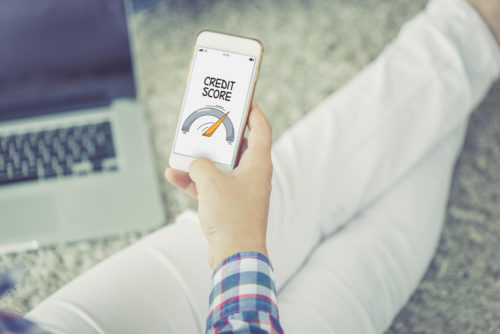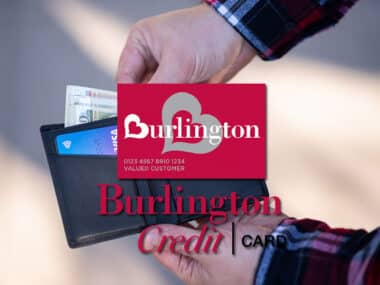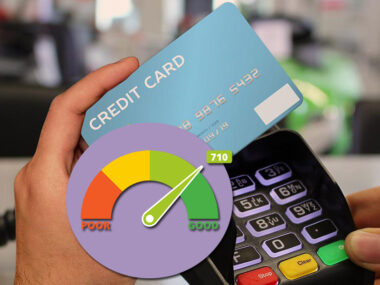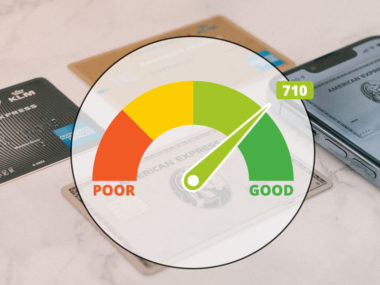
If you’ve never used credit or borrowed money before, then you likely don’t have a credit score yet. To establish a credit score, you’ll first need to open a lending account and start making consistent payments. It can take at least three to six months of payments for your lenders to report anything to the credit bureaus so they can calculate a score for you.
Unfortunately, it’s not always easy to get a credit card when you don’t have a credit history. You can try to find lenders who use an alternative credit scoring system like UltraFICO or VantageScore, or you can piggyback on someone else’s good credit history and get signed up as an authorized user to their account. In this article, we’re discussing your options and how to build good credit fast.
Table of Contents
What Does Your Credit Score Start At?
Contrary to popular belief, your credit score is not sitting at zero until you start building it up (that’s not actually a score in any of the credit scoring ranges). If you’ve never opened a credit account or loan, you mostly likely don’t have a credit score at all. However, applying for a credit card won’t immediately generate a credit score for you. It takes a few months for banks and lenders to report your information to the credit bureaus before they can start building your credit report.
Once you begin to establish your credit history, your FICO credit score will likely start out at 300. Credit scores range from 300 to 850, so it’s impossible to have a score below that range. If you’ve never used credit or borrowed money, you won’t have a credit score at all. Here’s a breakdown of the credit score ranges between 300 and 850, and what they mean to you:
- Very Poor: A FICO score between 300 and 579 is considered very poor and will make it difficult to apply for a loan. If you do get approved, you will have a higher interest rate.
- Fair: Scores between 580 and 669 are considered fair and may yield better terms on loans and credit cards.
- Good: To be considered in good credit standing, you will need a FICO score of at least 670 to 739. If your credit score is below this range you may want to work on your credit history before applying for any major loans or a home mortgage.
- Very Good: FICO scores ranging from 740 to 799 are considered very good and at this point make you eligible for some of the best interest rates and loan terms.
- Exceptional: Excellent scores of 800 to 850 are rare and usually require a very long credit history of good standing and consistent payments.
Most people start out their adult life with no credit at all, eventually beginning their credit history at 300 and then slowly working their way up into better credit ranges. 66 percent of Americans have a good credit score or better, so it’s possible to get there in time.
What About Alternatives to FICO Credit Scores?
UltraFICO
The main credit scoring system is the Fair Isaac Corporation (FICO), but they created UltraFICO, a new system for calculating credit scores specifically for people who haven’t used credit in the past. If you don’t yet have a credit score, or your score is very poor, you can opt-in to the UltraFICO program by requesting that one of the major credit bureaus use your banking history to create a new score.
Experian (one of the three major credit reporting agencies) will take checking, savings, and money market accounts selected by you and analyze your minimum balances and bill payment history to determine your UltraFICO score. This new credit scoring system could help you get approved for a loan on better terms as long as your lender will accept the UltraFICO report.
VantageScore
An alternative to FICO scores that lenders are beginning to use is the VantageScore. While FICO can take up to six months to produce a report and credit score, VantageScore can start showing a credit score within a month or two of your first credit activity. A VantageScore ranges from 300 to 850 and a score of 700 is generally considered to be good while 750 and above is excellent.
How To Establish a Credit Score: The Fastest Way To Build Credit
Establishing a credit score isn’t always as easy as signing up for a credit card. It can be difficult to get approved for a line of credit if you don’t have a credit history and even if you’re approved, it can take a long time for your credit card payments to build momentum and bring your score up. Here are a few faster ways to establish your credit score:
Use a Cosigner
If you’re struggling to get approved for a credit card or loan, you can use a friend or a family member as a cosigner. A cosigner is someone agreeing to pay your bill if you don’t. It is a serious obligation to agree to cosign on somebody else’s loan, but as long as you maintain good habits and pay your bills on time, your cosigner’s credit report will also benefit from your good payment history.
Become an Authorized User and/or Joint Account Holder
A fast way to establish and start building your credit score is to get signed up as an authorized user or joint account holder of another person’s credit account. Usually, a spouse or parent will add you as an authorized user to their account.
Ensure the main account holder has a good credit history and always pays their bill on time, otherwise their bad habits could negatively affect your credit score. You should also check to ensure their bank reports secondary users’ transactions to the credit bureaus. If so, you can start making purchases with the credit card — just make sure to pay off your balance every month.
Apply for a Secured Credit Card
Alternatively, some lenders may be willing to open a secured credit card for you. A secured credit card works the same way other credit cards do. Your bank will set a credit limit which you can not spend over that limit, but you should try to avoid spending even 30 percent of the limit as more than that can reflect negatively on your credit score.
The secured credit card is a good alternative for those who can’t get approved for other credit cards because it’s less risky to banks. Most banks require a down payment in order to open a secured card, or a linked savings account so, in case you don’t pay the monthly bill, your premium is already covered. Don’t worry, if you have to give a down payment, you will get that money back when you close the account.
How Long Does It Take To Get Good Credit?
While starting out at a score as low as 300 may seem daunting, building a good credit history from nothing is far easier than rebuilding your score from a bad credit history. Once you start to build your credit history, it is crucial to maintain good habits, always pay your bills on time, and watch your borrowing limits. Credit reports have long histories and it could take a few years to build your score into the good range. These are the categories FICO uses to determine your credit score:
- Payment History (35 percent)
- Amounts Owed (30 percent)
- Length of Credit History (15 percent)
- New Credit (10 percent)
- Credit Mix (10 percent)
If you maintain good habits with your credit, loans, and other bills, you could start seeing movement on your FICO credit score in three to six months. Alternatively, you could get a credit score in as little as one or two months by using a scoring alternative like VantageScore. Getting your score up into the “Good” or better ranges will take some work and time. Keep up on your payments, keep your amounts owed very low, keep old credit accounts open, and diversify your credit mix if you can. Remain patient and you will start seeing results on your credit report.
Image Source: https://depositphotos.com/





